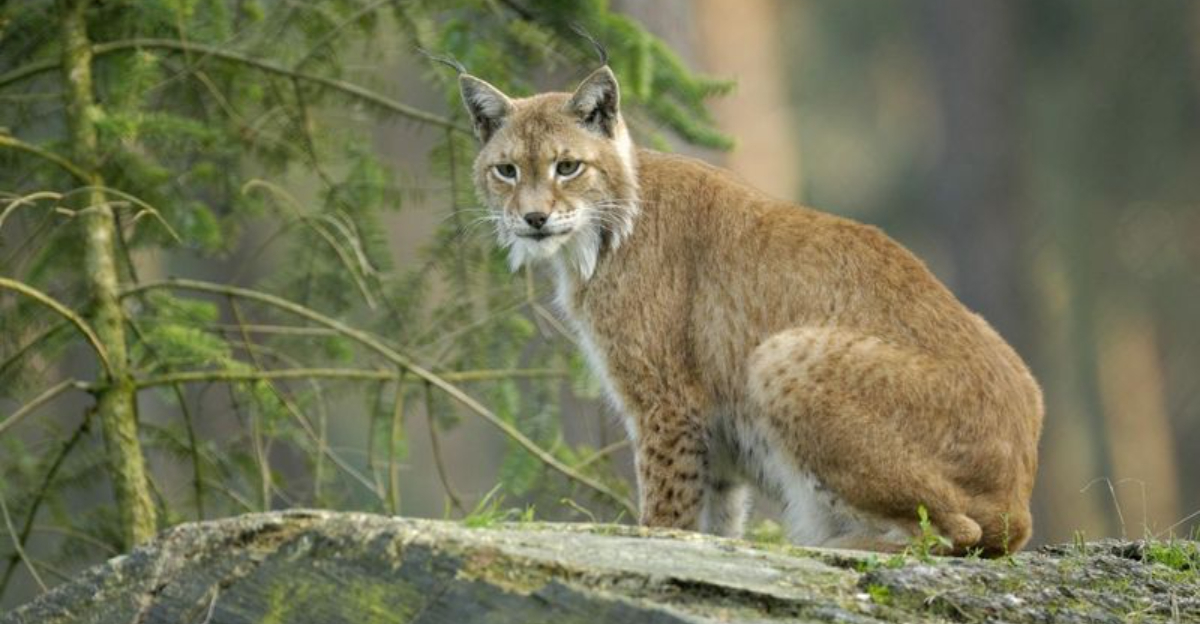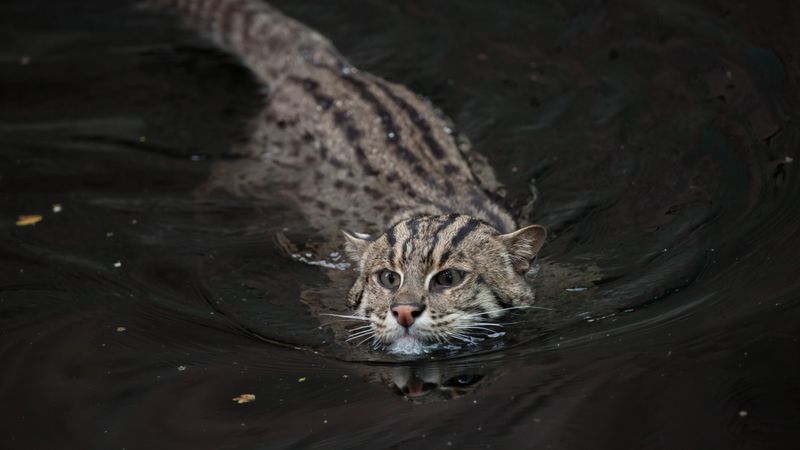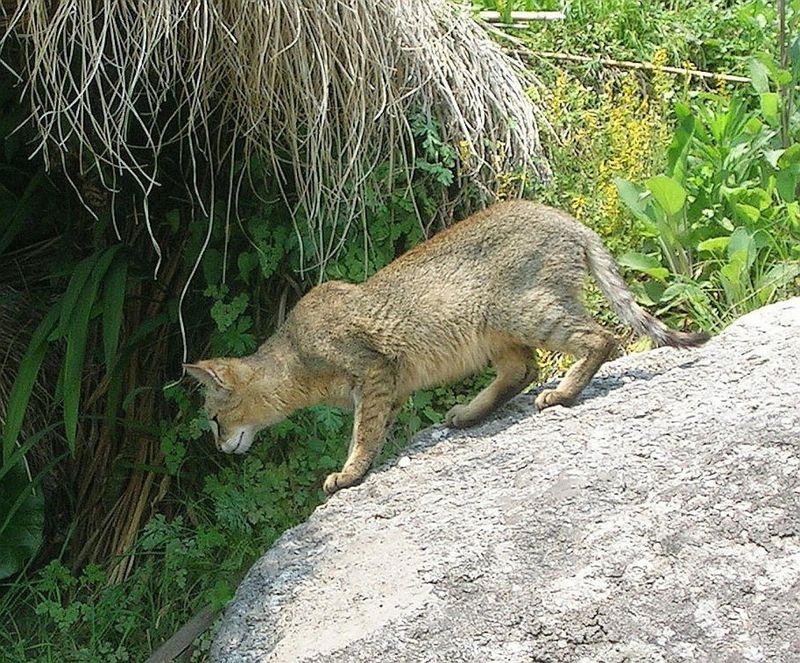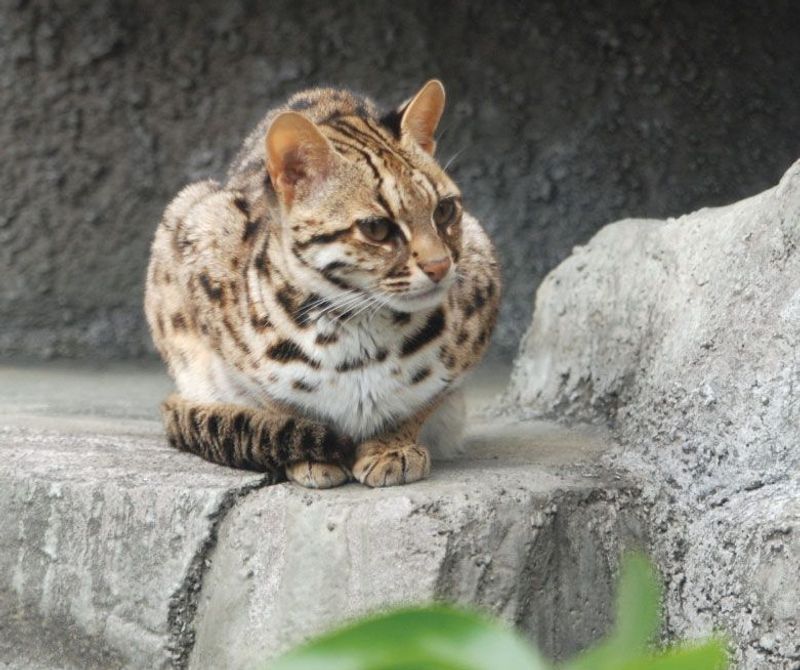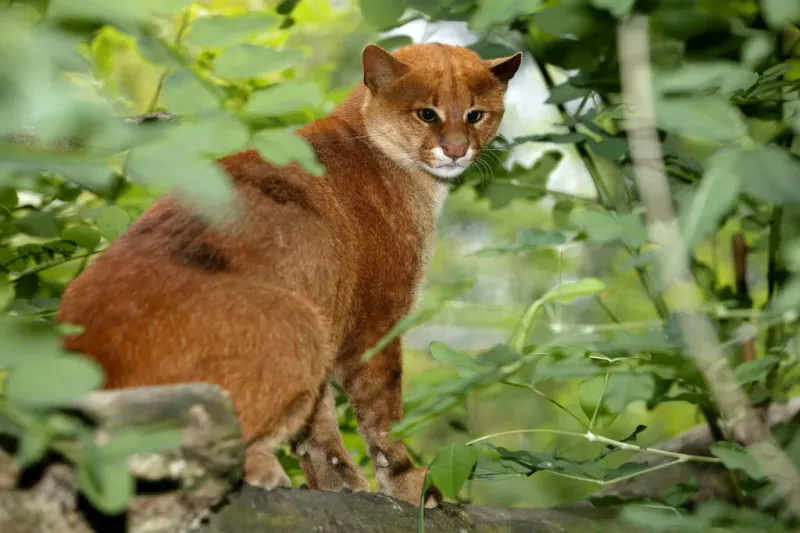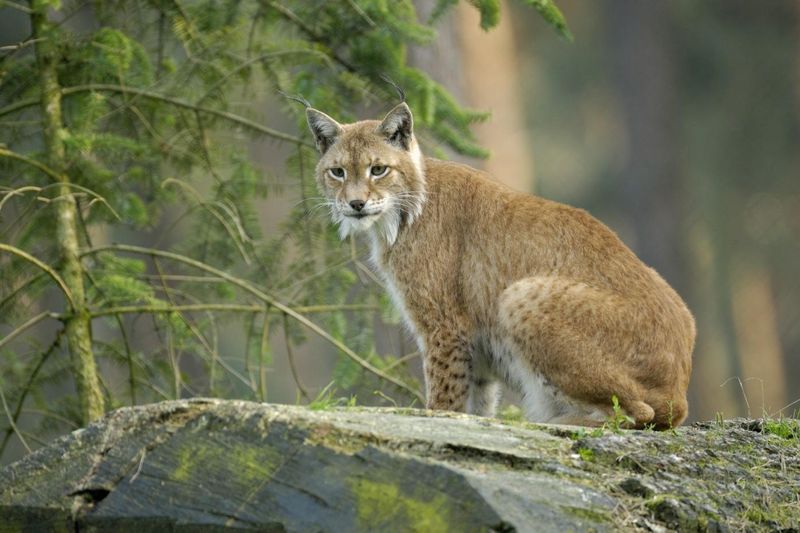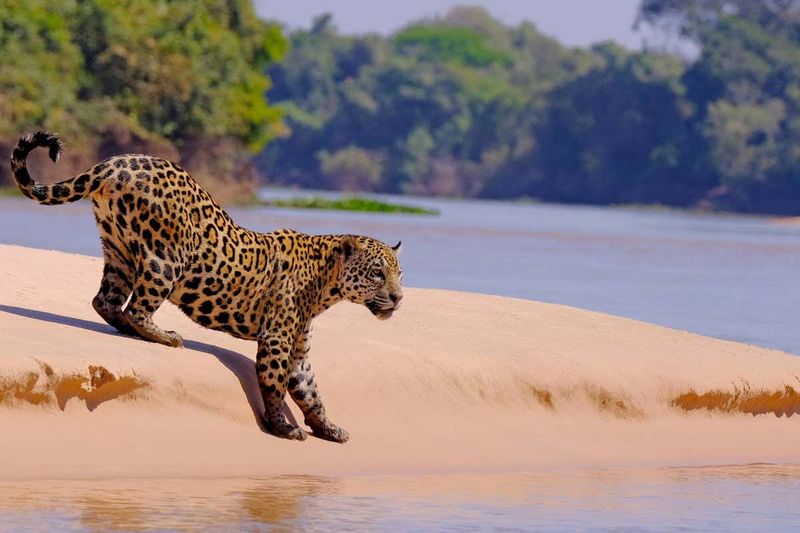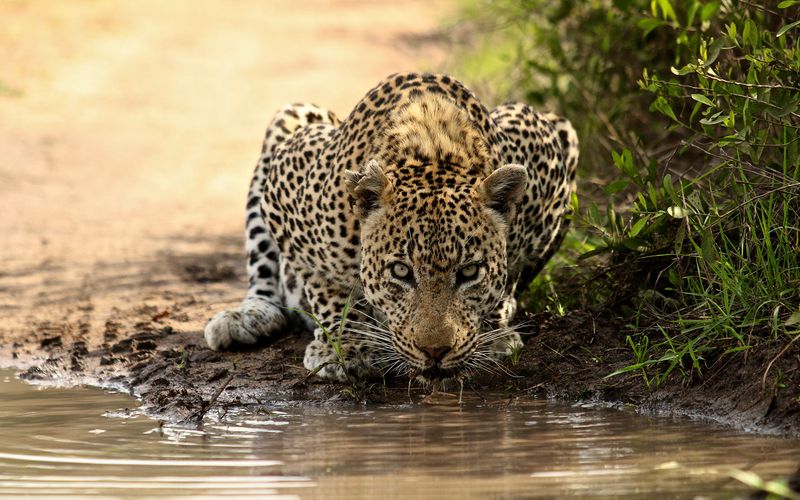📖 Table of Content:
Wild cats are among the most adaptable predators on the planet. Their survival depends on the ability to navigate a variety of extreme and unpredictable landscapes. Wet environments, in particular, pose unique challenges that these cats have learned to overcome.
From dense swamps to fast-moving rivers, these habitats demand stealth, strength, and strategy. Wild cats living in such places must adjust their hunting techniques and behavior to succeed. Every movement, from stalking prey to escaping danger, is shaped by water-dominated surroundings.
Specialized traits like webbed paws, water-resistant coats, and exceptional swimming ability set these felines apart. Their bodies and instincts have evolved to master life where land meets water. These powerful adaptations reveal just how versatile and remarkable wild cats truly are.
1. Fishing Cat
Gliding through murky waters with flipper-like paws, the Fishing Cat is built for the hunt. Its dense, waterproof coat shields it from the cold and damp as it closes in on unsuspecting prey. In the lush wetlands of South and Southeast Asia, this feline thrives where others might falter.
Unlike most felines, these cats actually enjoy water! They can dive completely underwater to catch prey, using their sharp claws to spear fish with incredible accuracy. Their short tails help them steer while swimming.
Fishing Cats have special scent glands that leave waterproof markings on trees and rocks around their territory. They’re about twice the size of house cats, with stocky bodies perfectly built for navigating through dense swamp vegetation.
2. Jungle Cat
Jungle Cats thrive in the marshy swamplands across Asia and the Middle East. Their long legs allow them to move easily through shallow water while keeping their bodies dry, making them excellent swamp hunters.
These medium-sized cats have sandy brown fur that blends perfectly with reed beds and tall grasses. Their ears feature distinctive black tufts that help them detect the slightest movements of prey hiding in murky waters.
Jungle Cats primarily hunt at dawn and dusk when swamp creatures are most active. They can leap impressive distances to pounce on frogs, birds, and small mammals. Despite their name, they actually prefer wetlands to dense forests!
3. Leopard Cat
In the tangled stillness of Asian mangroves, the Leopard Cat moves like a whisper. Its dappled coat mirrors the broken light of the swamp, cloaking it in near invisibility. Blending into the shadows, it hunts and hides with silent precision.
These small cats have partially webbed toes that help them navigate muddy terrain without sinking. They’re excellent climbers too, often resting in low branches above the water to avoid flooding during monsoon seasons.
Leopard Cats hunt mainly at night, using their large eyes that can see six times better than humans in the dark. They feast on swamp-dwelling rodents, birds, frogs, and even fish stranded in shallow pools. Their small size lets them access tight spaces where larger predators can’t follow.
4. Flat-headed Cat
With eyes perched high on a flattened head, the Flat-headed Cat glides beneath the waterline like a shadow. Its skull shape is a perfect match for stealthy hunting, offering a wide view above while the body stays unseen below. This elusive feline is a true master of the swamp.
These small cats have extra-long canine teeth perfect for gripping slippery prey like fish and frogs. Their front teeth are angled forward to create a specialized scoop for catching aquatic animals in Southeast Asian swamps.
Flat-headed Cats have the most webbing between their toes of any wild cat, making them excellent swimmers. They’re so dependent on wetlands that they rarely venture far from water. Scientists believe they may even drink water directly from swamps rather than getting moisture from their food like most cats.
5. Jaguarundi
Jaguarundis patrol the swampy regions of Central and South America with their sleek, otter-like bodies. Their unusual shape helps them slip through dense vegetation and shallow waters with minimal splashing, making them stealthy hunters in wetland environments.
These cats come in two color phases – either dark gray or reddish-brown. Both colorations provide excellent camouflage among the shadows and reddish mud of tropical swamps. Unlike most cats, Jaguarundis are most active during daylight hours.
Jaguarundis have short legs and elongated bodies that help them chase prey through tangled swamp undergrowth. They hunt everything from small mammals to reptiles, birds, and fish. Their unusual rounded ears and flat heads give them a distinctive appearance unlike any other swamp-dwelling cat.
1. Eurasian Lynx
Along quiet forest rivers, the Eurasian Lynx moves like a ghost. Its wide paws barely disturb the mud, leaving no sign of its silent patrol. Waiting near the water’s edge, it watches for fish or creatures bold enough to drink.
Their tufted ears work like satellite dishes, rotating independently to catch the sounds of prey moving near the water. The distinctive black tufts also help them communicate with other lynx across open riverside areas.
Eurasian Lynx have thick, spotted coats that blend perfectly with dappled light along wooded riverbanks. They often set up dens in fallen logs or rock crevices near water sources. These powerful cats can swim across rivers when necessary, though they generally prefer to stay dry while hunting along the shores.
2. Jaguar
In the slow, winding rivers of the jungle, the jaguar rules with silent authority. Its dense frame and powerful limbs cut through water like blades. Even caimans and capybaras stand little chance against this stealthy aquatic hunter.
These spotted cats have incredibly powerful jaws that can pierce turtle shells and crack open nuts. They often hunt by waiting on overhanging branches above rivers, then diving in to catch fish or other prey with a single pounce.
Jaguars use rivers as highways through their territory, swimming long distances rather than going around. They’ve been known to drag prey larger than themselves up into trees near riverbanks to protect their meals from flooding and other scavengers. Many Amazon tribes consider them sacred river guardians.
3. Tiger
Tigers are surprisingly comfortable in water, often cooling off in rivers during hot weather in their Asian habitats. They’re powerful swimmers who can cross rivers up to 5 miles wide and have been spotted several miles offshore in the ocean!
These massive cats use rivers as natural boundaries for their territories. They’re also strategic hunters who understand water currents, sometimes deliberately positioning themselves downstream from drinking deer to mask their scent.
Tigers have semi-retractable claws that provide extra grip on slippery riverbanks. They’re one of few cats that regularly hunt fish, using their whiskers to detect vibrations in the water. Cubs often learn swimming naturally without fear, playing in shallow river edges under their mother’s watchful eyes.
4. Ocelot
Built for stealth in tangled terrain, ocelots thrive along riverbanks in Central and South America. Their spotted coats blend into the light and shadow of dense vegetation, making them hard to detect. This natural camouflage gives them a clear advantage when stalking birds and fish.
These medium-sized cats have specialized teeth designed for slicing through the scales of fish they catch along shallow river edges. They’re nimble climbers who often rest in trees overlooking rivers, watching for prey movements below.
Ocelots follow predictable paths along riverbanks, often leaving scent markings on prominent rocks or trees. They’re excellent swimmers when needed but prefer to stay dry, delicately fishing with their paws from the shore. Their large eyes contain special adaptations that allow them to see clearly underwater when hunting fish.
5. Leopard
Rivers act as both highways and borders for leopards, guiding their movements and marking their territory. These cats hunt along the water’s edge, where prey is plentiful. Their raw power lets them drag large kills into trees, shielding them from scavengers and rising waters.
These adaptable cats are comfortable in water and strong swimmers when needed. They often hunt baboons and monkeys that cluster near rivers, using the sound of flowing water to mask their approach through riverside vegetation.
Leopards have been observed fishing in shallow waters, scooping out fish with quick paw movements. Their spotted coats blend perfectly with the dappled light filtering through riverside trees. Many leopards follow seasonal rivers, moving their territories as water levels change throughout the year.
